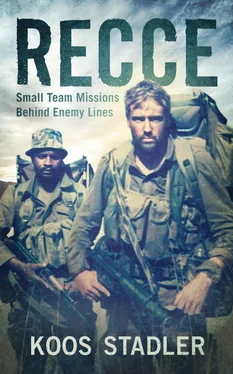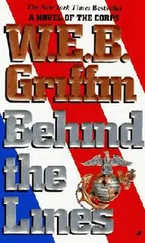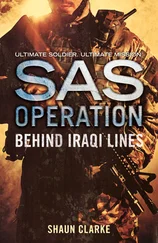Dave Drew picked me up at the hotel and we drove together to Defence HQ. He thought it wise not to argue the point when I told him that I would be presenting the ops plan. We arrived early and set up maps and other aids in the conference room of the Chief of the Defence Force.
The General Staff took their places, and I desperately looked around for a rank that I could more or less associate with, but the lowest was a brigadier. The Chief’s aide-de-camp, a captain, was not even allowed near the briefing room. General Jannie Geldenhuys, then Chief of the Defence Force, entered and sat down at the top end of the table.
My moment of truth had arrived. As usual, Dave did a magnificent job of sketching the strategic picture and highlighting the enemy activity in our area of operations. Then it was my turn.
But this time I was prepared. I let the mission unfold on the map like some mysterious adventure, exactly as Brigadier Serfontein had suggested, then talked them through the resources required and ended off with a summary of the emergency procedures. Once I had finished, there was a brief discussion about the political repercussions if the operation failed, if a helicopter went down or if one of us got caught.
At the end General Geldenhuys sat back in his chair and addressed me across the room: “Lieutenant, tell me, what is your gut feel, is this going to work?”
By now I had worked up an overdose of courage, since, from the reactions round the table, I could sense that the operation was on. “Yes, General, we are very well prepared and I have no doubt that we’ll pull it off,” I said without hesitation.
The General seemed satisfied. The deployment was approved and the meeting adjourned, leaving Dave and me with a great sense of accomplishment. Back at Special Forces HQ Brigadier Serfontein called us in and congratulated us. He had been informed by the Chief’s office that we had presented an excellent briefing and that the boss was impressed by our performance – apparently one of the best he had ever heard!
I felt like an upstanding citizen again, and I am forever indebted to Swarthand Serfontein for lifting me up from the gutters of humiliation that day and for restoring my pride!
A C-130 brought Oom Boet Swart, Dave Scales and all the Tac HQ equipment from Phalaborwa and picked us up at Swartkop Air Force Base for the flight to Ondangwa, where we had a week for final preparations. The Tac HQ was set up in one part of the old jail in Fort Rev, and Dave wasted no time in setting up comms equipment and testing frequencies. The operators made final preparations to their kit. The Pick and Slurry were prepared and distributed among the teams. Each operator would pack a minimum of 30 litres of water, while an additional 30 litres for each would be packed to cache at the drop-off LZ.
As usual, a lot of time was spent on emergency procedures. We talked endlessly through the contingencies and role-played various scenarios with the Tac HQ. The final kit inspection was done in minute detail: all equipment was unpacked and rechecked for functionality and non-traceability. Batteries were checked and recharged where required; radios and electronic equipment were once again checked and tested to ensure they were both serviceable and “sterile” (the term used for non-traceable).
On the afternoon of the deployment the teams were trooped with two Puma helicopters to Okongwati in Kaokoland. Oom Sarel Visser, 5 Recce chaplain, and Oom Boet accompanied us while Dave manned the radios back at Fort Rev. At Okongwati, in a secluded spot under the trees away from the helicopters, we changed into our ops gear – mostly olive green with some pieces of FAPLA uniform – while the crews refuelled the helicopters. As we waited for last light, Oom Sarel put on his United Church of the Conqueror cassock, read from the Bible and gave us a short message of encouragement before giving communion to the teams. This was a custom unique to Small Teams that not only lifted our spirits but also strengthened the bond between us.
We took off before last light and crossed the Cunene River into Angola while visibility was still good. Vic and I were in the first Puma, with Neves and Da Costa following in the second. While there was still enough light, we kept the doors open and helped the pilots observe the skies for enemy aircraft, but all seemed quiet. When it grew too dark to see, we closed the doors and the pilots switched to night-vision goggles.
The drop-off LZ was about 40 km from the railway line in the rugged desert terrain south of Caraculo, a little settlement on the plain between Namibe and the Serra de Leba pass. We had picked one LZ for both teams, since it would serve as both the main emergency RV and a cache for the reserves. From there the teams would split up to approach their different target areas, the idea being to cover a wider stretch of the line. Each team would plant three charges five kilometres apart. All charges would activate within 30 minutes of priming, but had been set with different time delays so that they would come “alive” at different times over the next six weeks, ready to be detonated by the first diesel-electric unit that passed over them.
The LZ, in a grassy valley between sloping ridges, had been carefully picked. The moon was approaching first quarter and the pilots found the spot easily enough. The landing went off without any glitches. While the second Puma circled the area, Vic and I quickly offloaded the backpacks, water bags and crates of reserves for the cache. Then we kept a lookout while the procedure was repeated with the second helicopter.
Once the helicopters had departed, we moved into a defensive position around the LZ and waited, listening carefully for any sounds that might indicate the presence of enemy or local population. To me, this was always the worst part of any deployment. As the noise of the helicopters faded away to the south and the silence of the night became almost tangible after the rush, I was overwhelmed by a feeling of loneliness. But I kept these thoughts to myself, as there was a lot to do before daylight.
After an hour’s listening, we converged on the pile of reserve equipment and started caching the crates and water bags. It was slow, painstaking work, as we had to dig a separate hole for each item, bury it and camouflage it. Then the exact position was carefully logged by means of a sketch in relation to objects and features in the area. All the time one of us would be positioned on higher ground away from the activity to listen for any sound of approaching enemy.
By first light we had finished. The two teams had moved into separate positions on high ground overlooking the LZ area. Well camouflaged and with good vision on approach routes, we waited out the day, calling in on the VHF every hour to check if the other team was okay. All appeared quiet, and by late afternoon we decided to move out that night. Before last light Neves approached the cache to ensure that it was undisturbed and still properly camouflaged.
Vic and I would take the area west of Caraculo, while Neves and Da Costa would go 20 km further east. I had not expected the going to be as taxing as I experienced it that first night. My backpack weighed in excess of 85 kg, which was more than my own body weight, and it took great effort to get it on my back and to stand up. For a main weapon, I carried the Hungarian AMD-65, a modified version of the Russian AKM assault rifle, while Vic had a silenced weapon, the MP5 SD. [13] The Heckler & Koch MP5 9-mm submachine gun is widely used by special operations and specialised law-enforcement units worldwide.
It had become standard practice for teams to have a normal (unsilenced) firearm and a silenced weapon as main armament. Each operator would carry a pistol of his own choice as a secondary weapon. I had also taken it upon myself to do the navigation, which I routinely did during subsequent operations, as it was a skill I liked to practise and which I believed I had perfected to a fine art. But on this first deployment it was a challenge to navigate the rugged mountainous terrain while carefully applying patrol tactics and anti-tracking techniques.
Читать дальше












